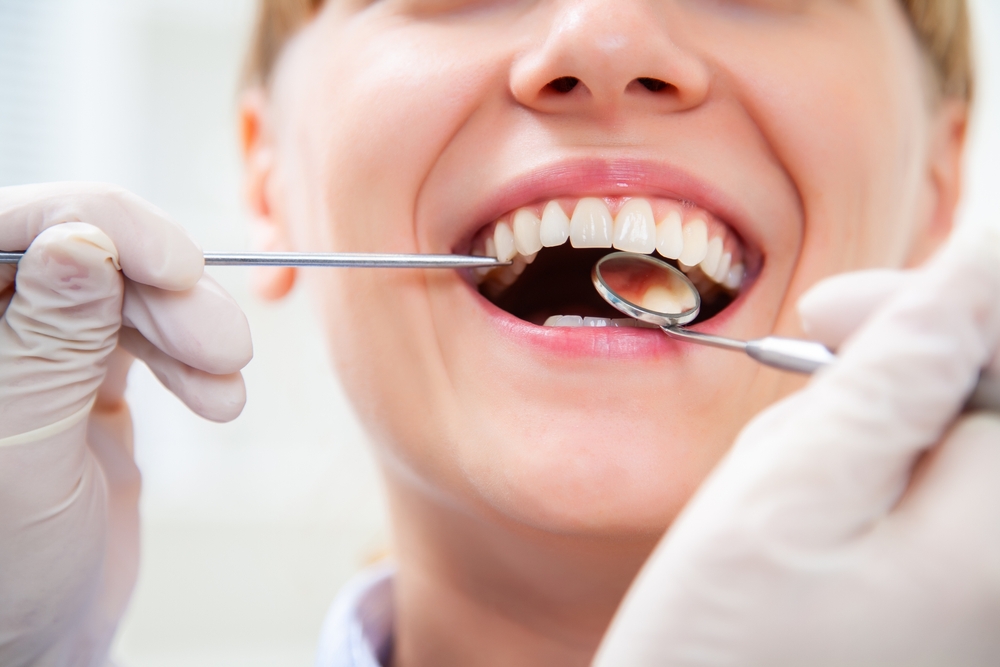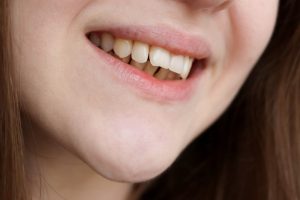
Dentleon İzmir Bornova, Çiğli, Güzelbahçe, Bayraklı Özel Diş Kliniği
What is a Molar, How is the Eruption Process Managed?
6 September 2025

Table of Contents
What is a Molar, How is the Eruption Process Managed?. 1
How is the Molar Eruption Process, What are the Symptoms?. 2
Problems Encountered in the Molar Tooth Eruption Process. 2
Methods to Facilitate the Molar Eruption Process in Babies. 3
What Should Be Considered When Molar Teeth?. 3
Frequently Asked Questions About Molars. 3
Will There Be Overlap with Other Teeth When the Molar Comes Out?. 3
Is Bleeding Gums Normal When Molars Erupt?. 3
What happens if the molar is not extracted?. 3
What is a Molar, How is the Eruption Process Managed?
Molars play a very important role in oral and dental health in both adults and children . These teeth, which take over most of the chewing function in daily life, contribute to the first step of the digestive system by breaking down food into small pieces. Furthermore, molars are not limited to chewing function alone; It acts as a balancing element in the alignment of other teeth , helping the jaw close correctly. Therefore, the health of molars is of great importance both functionally and aesthetically.
The process of molars erupting, especially in children, is one of the most curious issues for families. Because this period can cause pain, restlessness, loss of appetite and even sleep problems in young children. Parents’ ability to manage this process correctly both relaxes the child and prevents dental problems that may occur in the future. Therefore, learning the basics about molars is a critical step in children’s dental health.
What is a Molar?
Molars are large and wide-surfaced teeth located at the back of the mouth that provide chewing function. Unlike incisors and canines, they have a wide chewing surface, making it easier to crush, shred, and grind food. With these properties, they help food reach the stomach more easily and be processed more easily in the digestive system.
The first molars in babies usually begin to erupt between 12-18 months. The teeth that erupt during this period are called “first molars”. Then, around the age of 2, the second molars erupt and the child has a total of 20 milk teeth. The eruption process of these teeth can often be painful and cause restlessness in children. However, this is part of a natural development process.
In adulthood, the number of molars increases. Around the age of 6, the first permanent molars erupt and these teeth are permanent for life. At later ages, the second and third molars (known as wisdom teeth) erupt and complete the tooth row. Therefore, molars play an important role as the cornerstone of nutrition and jaw health both in childhood and adulthood.
What Do Molars Do?
Molars play an extremely critical role in terms of oral and dental health. Its primary functions are to break down food, crush it, and make it ready for digestion. Thanks to their wide and flat surface, they make it easier to grind foods, especially fibrous, hard or large pieces. In this respect, it is one of the most important actors of the chewing function, which is the first step of the digestive system.
However, molars do not only undertake the task of chewing. It works together with the front teeth to maintain intraoral balance and help the jaw close in a healthy way. In particular, the correct contact between the upper and lower jaws is very important for jaw joint health. Losses or irregularities in molars can lead to tooth shifts, crowding, and problems in the jaw joint (TMJ) over time.
In case of deficiency or poor health, not only the nutritional process is negatively affected, but also the overall oral health. Loss of molars can cause digestive difficulties, food going to the stomach without being broken down sufficiently, and accordingly, gastrointestinal disorders. In addition, shifting of other teeth, deterioration in tooth alignment and even aesthetic problems may occur due to the vacated space.
Another important function is to support the jawbone. Healthy molars contribute to the preservation of jawbone structure. Jawbone resorption can be seen in long-term tooth loss. This may make implant or prosthesis treatments difficult in the future.
In short, molars have a critical role in many issues, from chewing and digestion to aesthetics, from jaw health to oral balance. For this reason, regular check-ups of molars and early treatment of conditions such as caries or loss are extremely important to maintain general oral and dental health.
How is the Molar Eruption Process, What are the Symptoms?
The eruption process of molars may differ in babies. Among the symptoms of 2-year-old molaring, the following conditions can be observed:- Swelling and redness in the gums
– Restlessness and insomnia- Increased desire to chew- Increased amount of saliva in the mouth- Loss of appetiteAlthough these symptoms are generally considered natural, a pediatric dentist should be consulted in cases such as extreme fever or prolonged diarrhea.
Problems Encountered in the Molar Tooth Eruption Process
The process of molars erupting can be painful. Common problems in infants and children include pain, loss of appetite and restlessness. In addition, bleeding gums may occur as molars erupt. This condition usually goes away in a short time, but if it persists, it is necessary to consult a specialist.
Methods to Facilitate the Molar Eruption Process in Babies
Parents can apply some methods to relax their children during this period:- Using chilled teethers- Massaging the gums with warm water- Using appropriate painkiller gels with the recommendation of a doctorIn addition, attention should be paid to the child’s nutrition and very hard foods should be avoided during this process.
What Should Be Considered When Molar Teeth?
There are points that parents should pay attention to when molars are erupting. In particular, oral hygiene should not be neglected, and signs of infection should be observed in the gums. In case of prolonged fever, severe pain or excessive loss of appetite, a specialist’s opinion should be sought. If you are looking for a reliable pediatric dentist in Izmir, you can visit our Izmir pediatric dentist page.
Frequently Asked Questions About Molars
Will There Be Overlap with Other Teeth When the Molar Comes Out?
While the molar tooth is erupting, overlapping with other teeth can be seen, although rarely. In this case, the teeth may come out crooked and deterioration in the jaw structure may occur. These problems can be prevented with regular dental check-ups.
Is Bleeding Gums Normal When Molars Erupt?
Bleeding gums are a condition that can be seen when molars erupt. It usually goes away in a short time and does not pose a serious problem. However, if the bleeding becomes continuous or intense, a dentist should be consulted.
What happens if the molar is not extracted?
If a decayed or damaged molar is left untreated or extracted, it can lead to serious problems such as infection in the jawbone, bad breath, difficulty chewing and spreading to other teeth. Therefore, it is very important to consult a physician on time for a treatment plan.
In conclusion, molars are essential parts of oral health in both infancy and adulthood. With proper care and regular check-ups, molars can be preserved in a healthy way. Although the process of molar tooth eruption in babies can be challenging for parents, this period can be overcome more easily with the right methods and expert support.
Recent Posts



